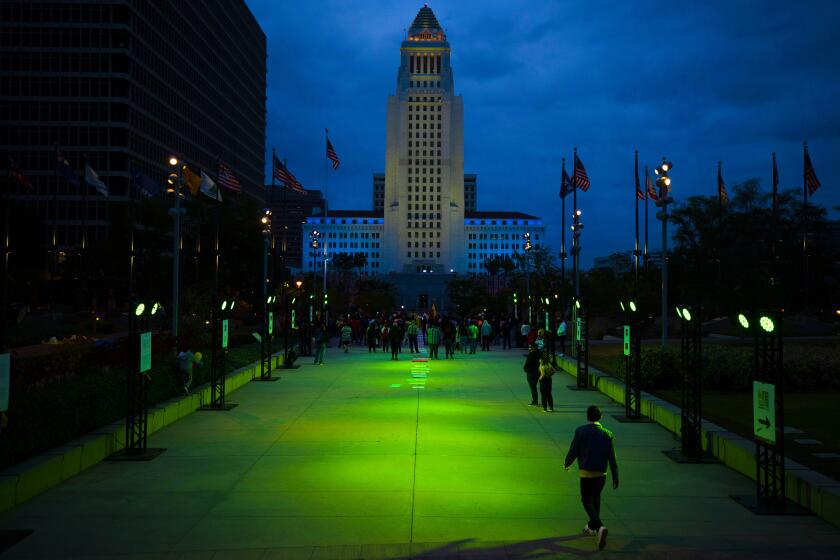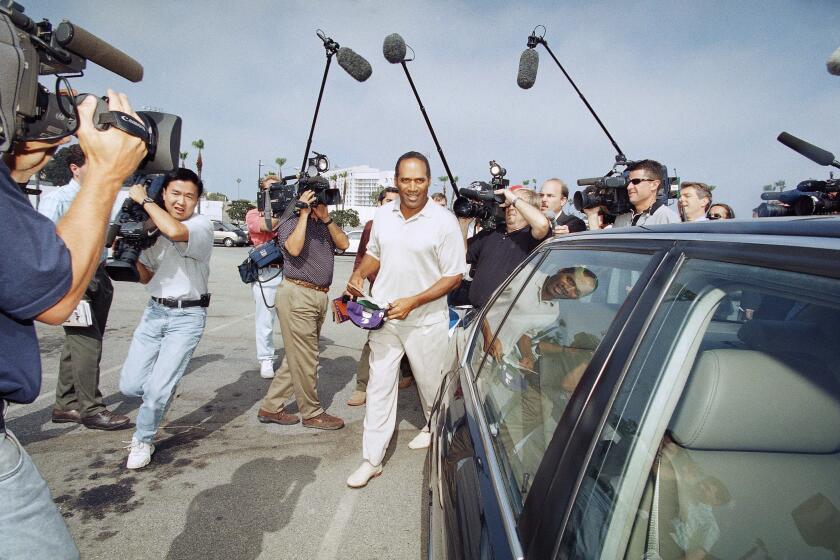Editorial: Building a better Jordan Downs
Jordan Downs, one of four federally subsidized housing projects squeezed into Watts, predates by a decade the riots that ravaged that part of Los Angeles in 1965. Since then, as schools and hospitals and community centers have been born and reborn, the housing projects have remained — resilient or intractable, depending on the perspective.
But on the 50th anniversary of the violence, Jordan Downs appears ready for reinvention as a mixed-use and mixed-income complex. An ambitious $700-million rebuilding plan has been on the drawing board for years, and crews have begun the state-required remediation of an adjacent, 21-acre toxin-contaminated factory site acquired by the Housing Authority of the City of Los Angeles in 2008.
Numerous challenges lie ahead: There are commitments for some funding but hardly all of it, and the Housing Authority has twice lost out on federal grants for the project. Residents, meanwhile, are fearful of how the rethinking and reconstruction of their homes will change their lives.
The goal of public housing has long been to provide temporary shelter to families who need time to get on their feet before moving on, but Jordan Downs has become a multi-generational village that celebrates together and mourns together. The complex has been the site of both gang warfare and truce.
Questions of ideology and pragmatism lurk in the background. Has traditional public housing failed? Will adding market-rate housing and retail better serve the people who live there? Will the new Jordan Downs be an alternative to old-style projects such as Nickerson Gardens, Imperial Courts and Gonzaque Village, or a model for them?
However those questions are answered, it’s crucial for current and future residents that Jordan Downs be rebuilt into a complex that could offer a way out of subsidized housing and up the economic ladder.
The visual starkness of the project today — 103 dilapidated two-story buildings in rows, separated by browning lawns and clothes lines — obscures the cohesiveness of this community. Many people grow up there, stay and have children who stay. On a recent morning, a class was in session in the community center while preparations were underway outside for a barbecue. Residents crossing the grass unfailingly greeted one another with calls of “Good morning!”
And much has changed. The Housing Authority has spent nearly $5 million over the last four years to provide job training, child care and parenting workshops, substance-abuse treatment and other programs. It is also dramatically less violent than it once was. A community policing and mentoring effort launched in 2011 by the Housing Authority and the Los Angeles Police Department cut homicides in the complex from 25 in the previous decade to one in the following four years.
At the time of the Watts riots, nearly all of the residents were black. Today, the complex is 70% Latino. There are 700 units and 2,600 residents — half of them age 18 and younger. With only 47% of residents reporting earned wages last year, the average annual income at Jordan Downs is $14,000. The few who do earn higher incomes pay higher rent but are never forced to leave. Housing officials contend that their presence helps organically create a mixed-income community, which is exactly the kind of community the new Jordan Downs complex aims to have.
Plans for the new development have it maintaining 700 units of subsidized housing, and every resident in good standing at the old Jordan Downs is being promised a home there. An additional 700 units of market-rate and affordable housing would also be built. Ideally, subsidized residents would get jobs and earn more income and graduate to nonsubsidized housing, possibly in the same complex. The retail complex would also offer job opportunities for residents in Jordan Downs and throughout Watts.
But first, it has to get built. And although the loss of the federal grants wasn’t fatal, city officials can’t afford to keep missing such opportunities. In the 50 years since the riots, Watts has suffered too much from short official attention spans. The half-century anniversary has helped refocus the full attention of city elected officials and the Housing Authority on the Jordan Downs reinvention, and they should all work to make sure construction starts as soon as the site cleanup is done next year.
Follow the Opinion section on Twitter @latimesopinion and Facebook
More to Read
A cure for the common opinion
Get thought-provoking perspectives with our weekly newsletter.
You may occasionally receive promotional content from the Los Angeles Times.






